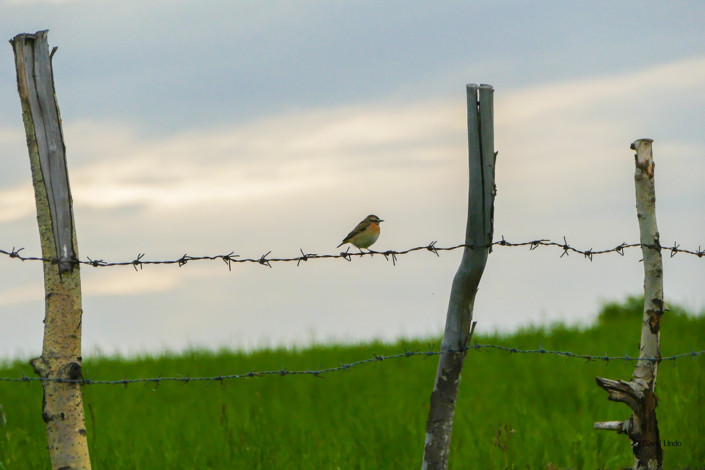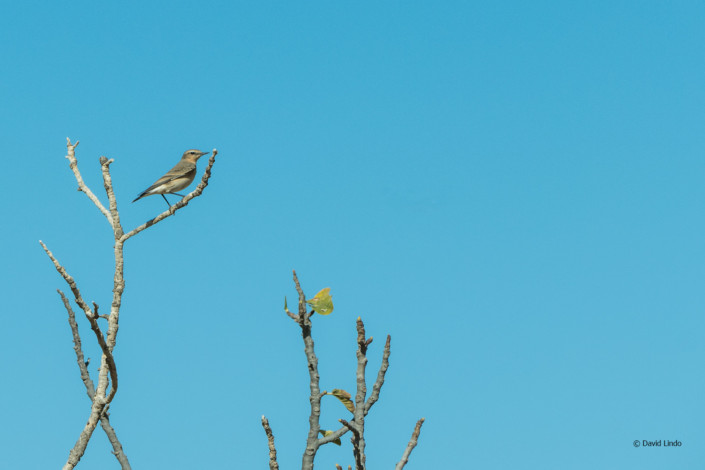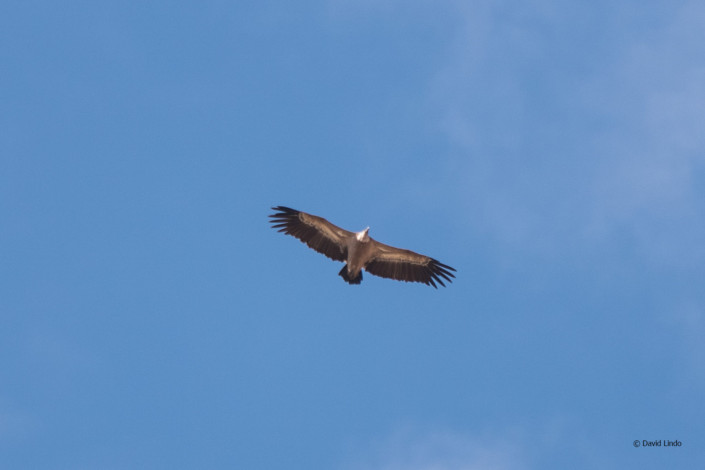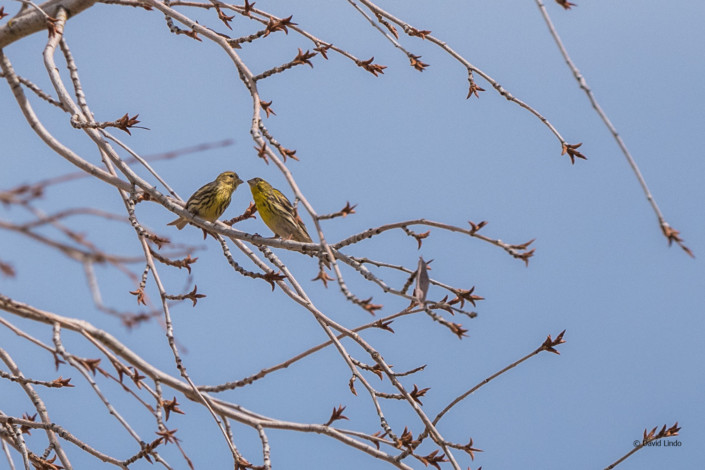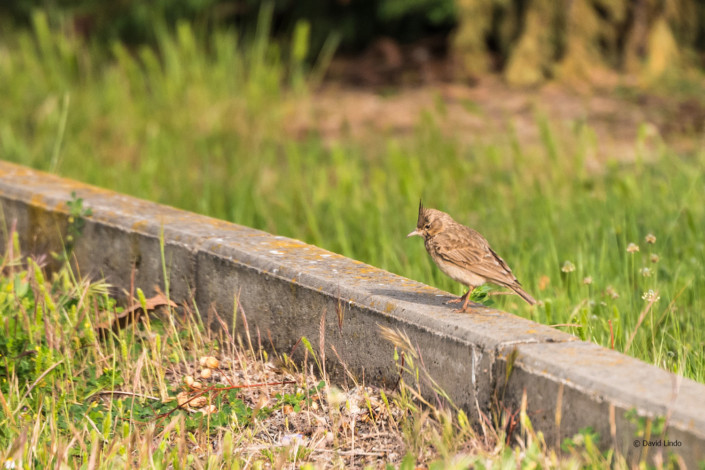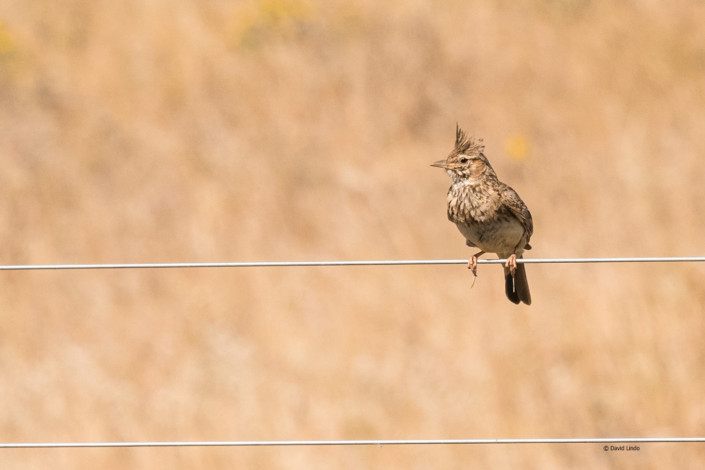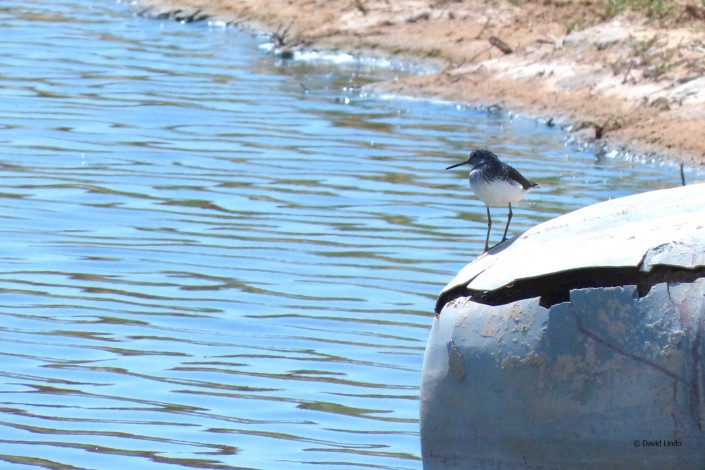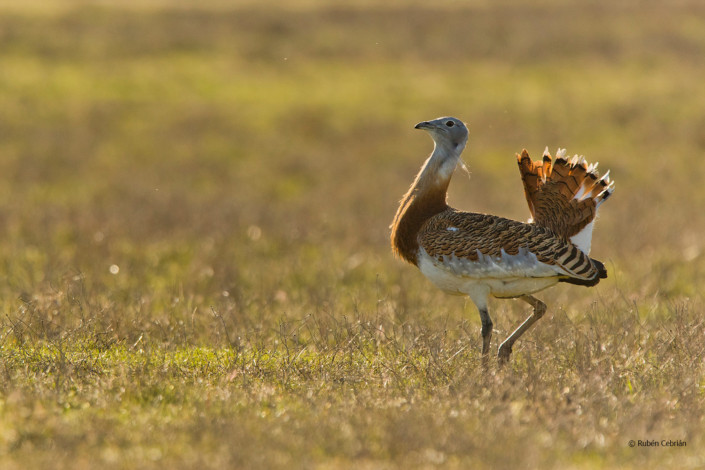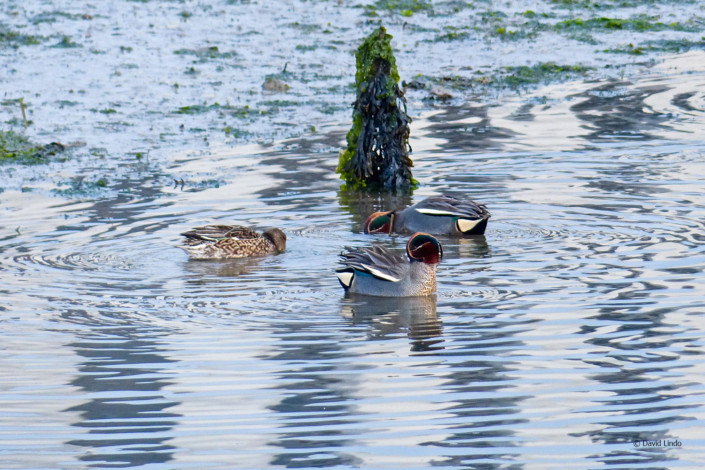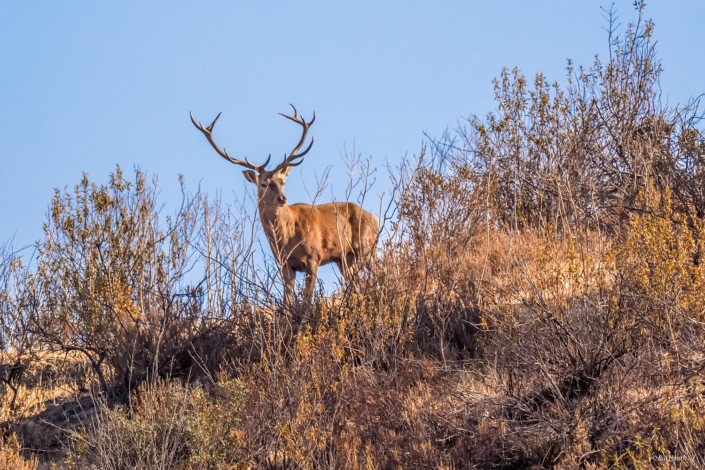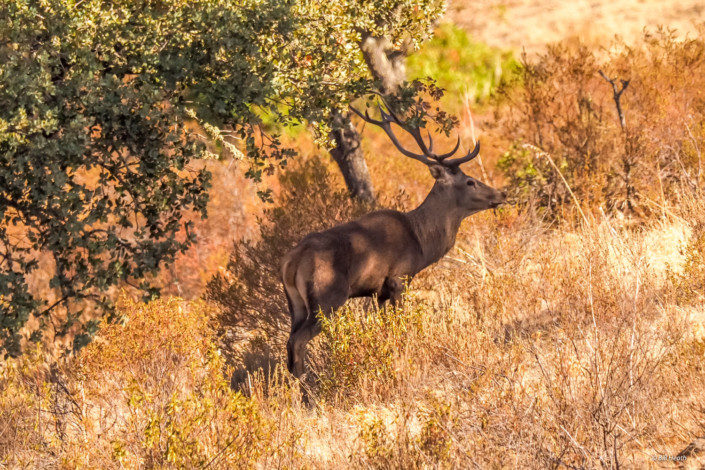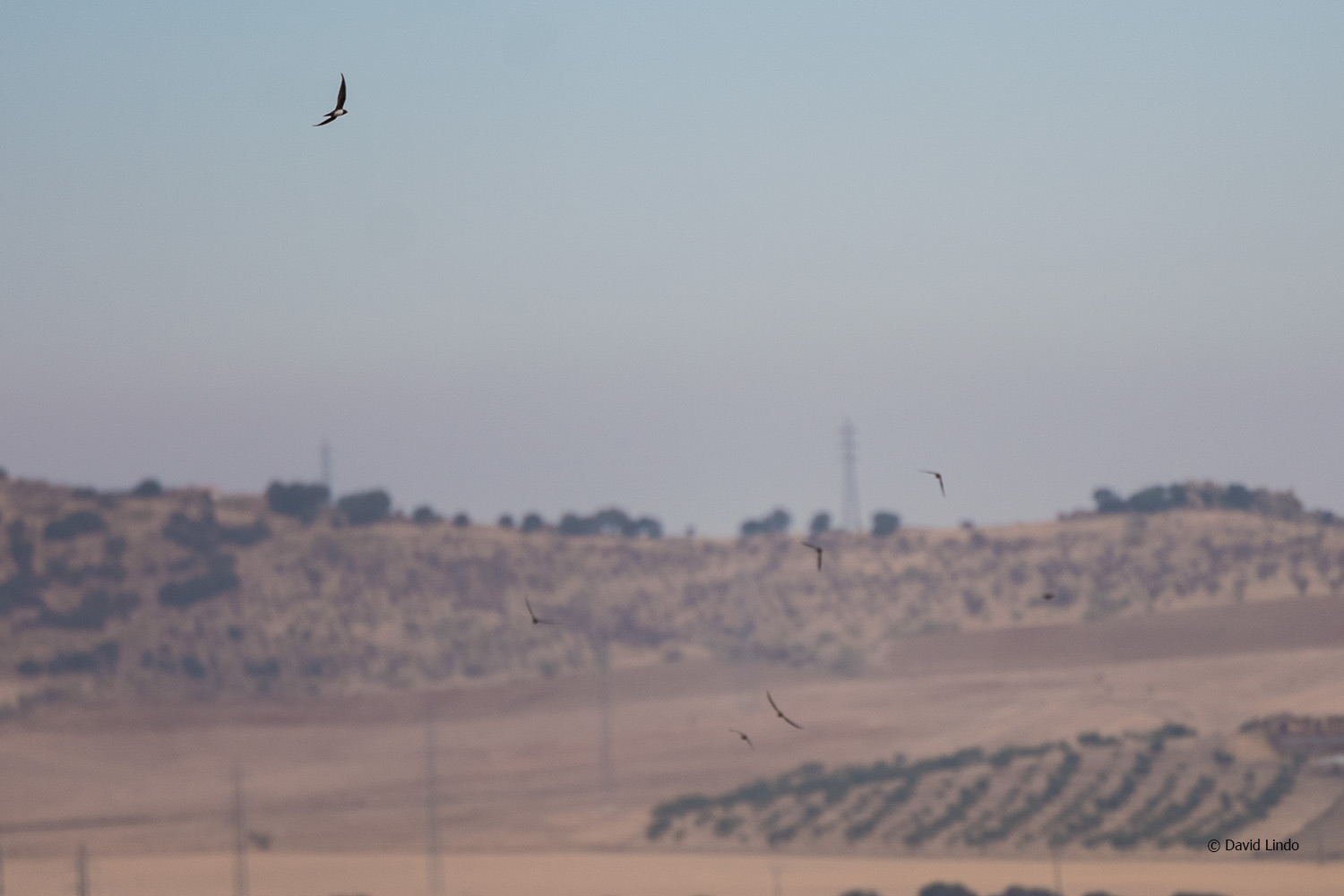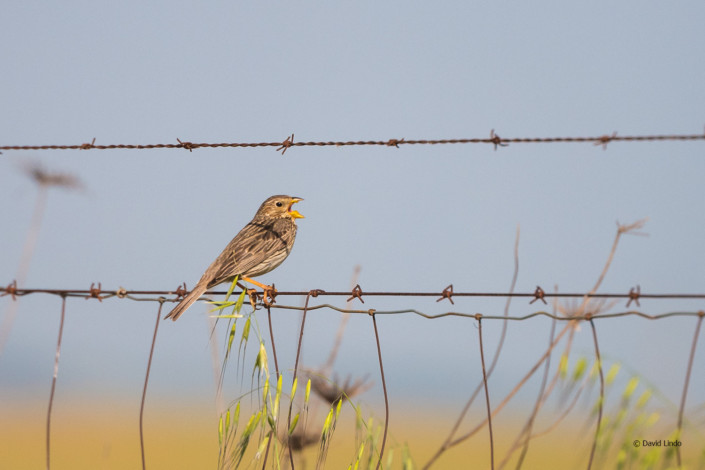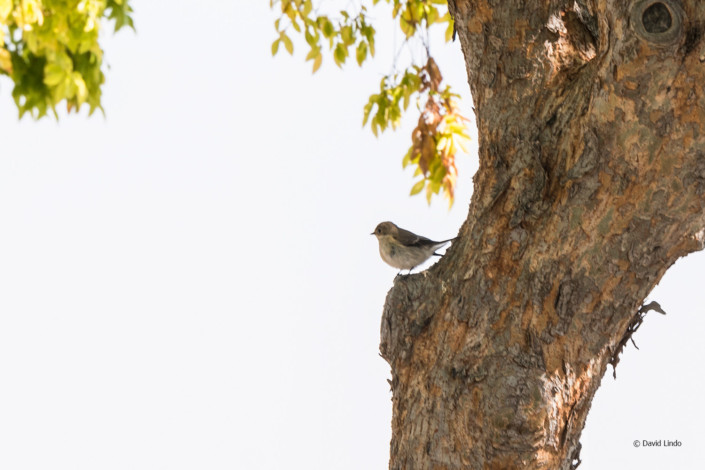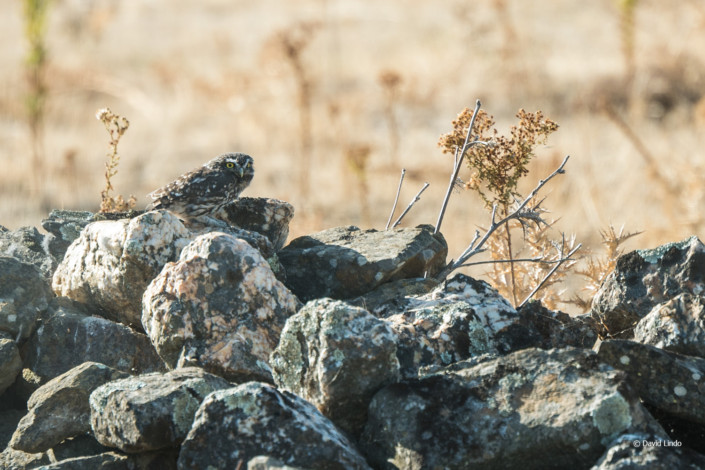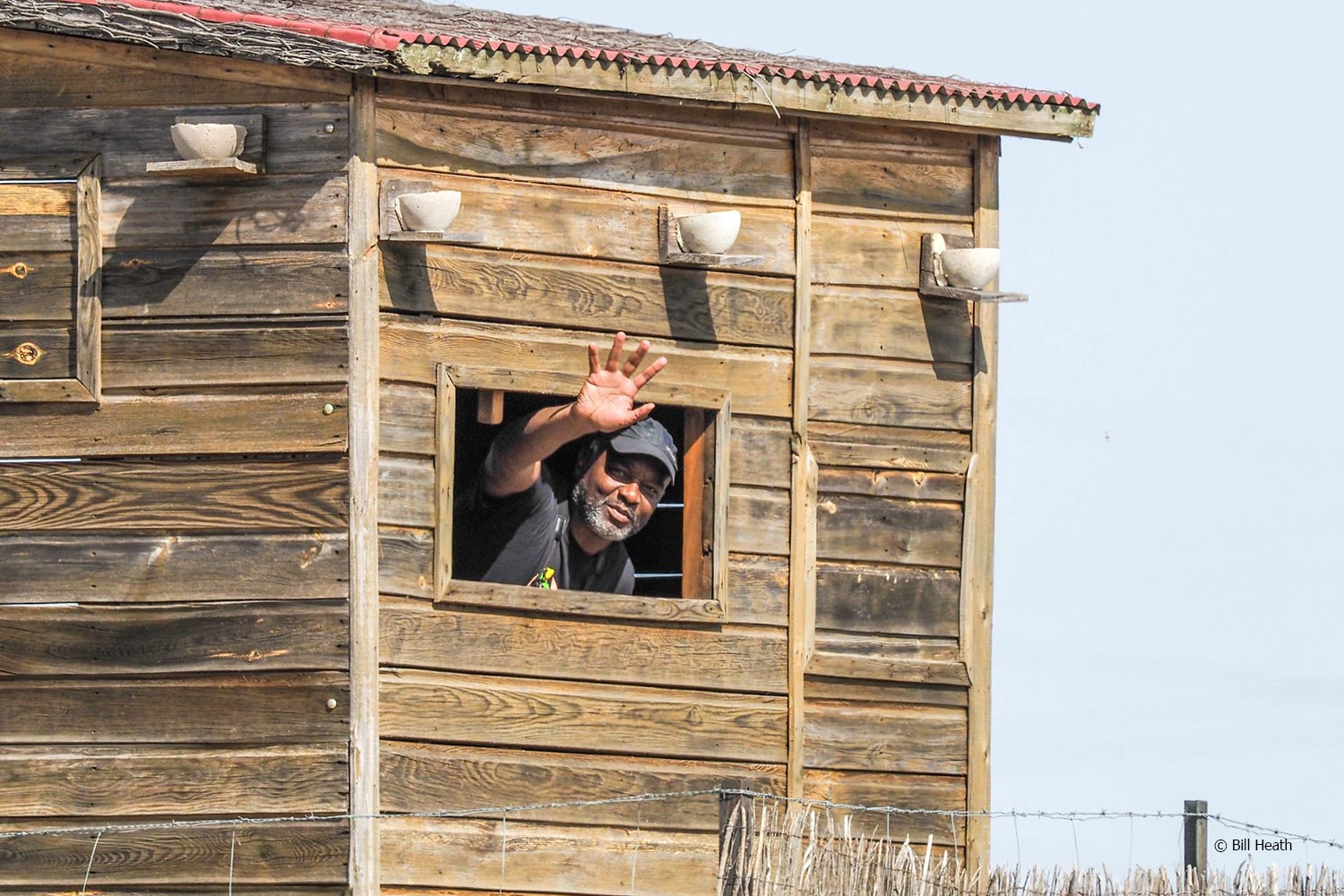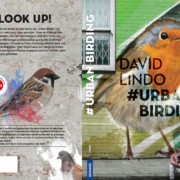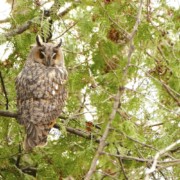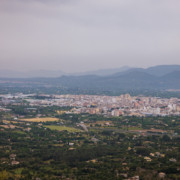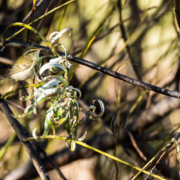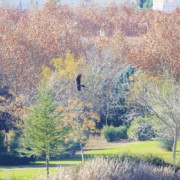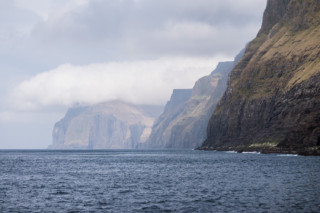23rd September – 29th September 2017
The Group
Leaders: David Lindo and Martin Kelsey. Participants: Ray, James, Jim and Louise, Mike, Bill and Liz.
23rd September: Transfer from Madrid
The team had arrived promptly by midday at Madrid airport and so, ahead of schedule, we set off around the Madrid ring road before heading onto the motorway towards Extremadura. The weather was hot and sunny and indeed it remained so for the whole holiday. We stopped at a bar for refreshments about halfway on the journey. From the car park we saw our first signs of autumn passage with Northern Wheatear and Whinchats, as well as resident Crested Larks.
Along the route to Extremadura we saw several Red Kites and a Buzzard, as well as Griffon Vulture.
We reached our base, Casa Rural el Recuerdo late afternoon with Red-rumped Swallows heralding our arrival, a Short-toed Eagle and Claudia there to welcome us. A short afternoon walk yielded other local birds such as Azure-winged Magpie, Melodious Warbler and Short-toed Treecreeper.
24rd September: The plains and valleys west of Trujillo
The group enjoyed a pre-breakfast walk with sightings of Pied Flycatcher and Serin.
After breakfast, we spent the day on the plains to the west of the small town of Trujillo. The long unbroken summer drought was evident in the arid appearance of the landscape, but despite first impressions, there were in fact many birds to see.
At our very first stop we had excellent views of Iberian Grey Shrike as well as both Thekla and Crested Larks, as well as some Calandra Larks. Whinchats and Northern Wheatears sat on the fences.
We took a short walk along a dirt track, starting from the edge of open woodland. In this seemingly birdless landscape, the walk offered us good views of both Black-bellied and Pin-tailed Sandgrouse, more Northern Wheatears (including a fine Greenland subspecies) and Whinchats, two Tawny Pipits and both Griffon and Black Vultures.
Following coffee quite close to Cáceres (with a very obliging Pied Flycatcher and Willow Warbler), we then headed towards the little village of Santa Marta de Magasca, seeing a perched Short-toed Eagle en route. We stopped above the River Tamuja (just a series of still pools at this time of the year). Here we saw Green Sandpiper and Sardinian Warbler, as well as Thekla Lark and more vultures.
Back on the open plains, we made our way to an ancient drovers’ trail. Red-veined Darters were found beside the path. There were clusters of the beautiful Merendera in flower. Northern Wheatears, Whinchats and Willow Warblers were our constant companions.
At Trujillo, we stopped at the San Lazaro Park for some urban birding. Here we had excellent views of Reed and Sedge Warblers, Little Ringed Plover and Common Sandpiper, two Common Snipe as well as Little Grebe, Common Coot, Moorhen and Mallard.
25rd September: Plains of Campo Lugar, Alcollarín Reservoir and the rice fields near Palazuelo
The day was spent close to base, visiting first the open plains south of Zorita, near the village of Campo Lugar. As soon as we arrived, we found Great Bustard and Black-bellied Sandgrouse in flight. As has been a recurrent theme during the week, we were finding Whinchats and Northern Wheatears in good numbers, as well as Calandra Lark and Marsh Harrier. Following coffee, we stopped at the Alcollarín reservoir. At a picnic area beside the reservoir we had lunch, whilst watching a great selection of birds including Spoonbill, waders (including Little Ringed Plover, Little Stint and Snipe) and duck such as Mallard, Teal and Shoveler. Pied Flycatchers were present in the trees that offered us welcome shade. From the dam at the reservoir, we watched two Black Stork soaring over the trees, whilst on the water were dozens of Little Grebes with a few Great Crested Grebes as well.
The afternoon was spent on the rice fields near the town of Palazuelo. Harvest was underway and this was creating feeding opportunities for birds such as Black-headed and Lesser Black-backed Gulls, Cattle Egrets, waders such as Ruff and Greenshank. Beside the River Ruercas we had views of both Common Waxbill and Red Avadavat, as well as a delightful Spotted Flycatcher. Returning close to the town of Zorita, we finished the day watching two Black-winged Stilts and some Dunlin amongst other waders.
26rd September: Monfragüe National Park
The Monfragüe National Park is one of the must-visit destinations in Extremadura and we spent a full day in the spectacular scenery of rocky gorges, rivers and Mediterranean scrub. Griffon and Black Vultures were present in the skies almost continually, whilst on the rock faces we watched Griffon Vultures at rest. At the first massive cliff face of Peña Falcon, we also watched a Peregrine, a distant Booted Eagle, two White-rumped Swifts and a Blue Rock Thrush. Red Deer were seen on several occasions as we drove slowly through the park.
We had coffee beside an area of cork oak woodland, where we had an outstanding view of a pale-phase Booted Eagle, and a rather distant Spanish Imperial Eagle. We stopped at the viewpoint of Portilla del Tiétar. Here we enjoyed further views of both Griffon and Black Vulture, a Blue Rock Thrush and a very obliging Two-tailed Pasha butterfly. We were just about to leave when we heard the barking call of Spanish Imperial Eagle and we were rewarded for our patience with excellent views of a pair of these magnificent birds, sky-dancing in display.
We completed the afternoon at the Fuente del Frances, watching a lovely series of small birds coming to drink, including Hawfinch, Chaffinch, Nuthatch, Blue and Great Tit, Long-tailed Tit, Garden Warbler, Blackcap, Common Redstart and Pied Flycatcher.
26rd September: Alange Reservoir, AMUS and the Roman Bridge at Mérida
We headed south-west, past Mérida (Extremadura’s capital city) and onto the reservoir of Alange. Here over the dam was a pack of perhaps 150 Alpine Swifts, making their chittering calls against the sky. On the rocks towering above the car park we found Rock Bunting and Blue Rock Thrush. Walking beside the reservoir we saw a Black Wheatear on the stones beside the water which then flew up to the olive groves and rocky outcrops. The hillside with its scrub and olive trees was a haven for migrants with Willow Warblers and Pied Flycatchers. Over the water we saw a few Great Cormorant, Black-headed Gulls, and Great Crested Grebes.
Following coffee near Almendralejo we then drove to the outskirts of Villafranca de los Barros to visit the AMUS bird hospital. We were met by Alvaro who showed us around the facilities, including the surgery and operating theatre, recovery centres and information centre. AMUS works on a variety of projects including bird recovery and treatment (especially with birds injured by gun-shot or poisoning), captive-breeding and reintroduction programmes. We had our picnic beside their facilities, watching migrant Pied Flycatchers and their captive Griffon Vultures.
The afternoon was spent on the wonderful Roman Bridge crossing the Guadiana River in Mérida and then exploring David’s excellent local patch. Highlights were the extraordinary number of passage migrants: flycatchers and Willow Warblers and a Tree Pipit.
After a breather at Casa Rural El Recuerdo, we spent sunset beside the Alcollarín Reservoir, eating our al fresco supper watching the sky as it changed colour. It was a beautiful quiet evening save, for the occasional quacks from the rafts of duck. We managed a distant view of Eagle Owl and a stunning view of the International Space Station as it orbited overhead.
28rd September: Belén Plains and Arrocampo Reservoir
From Trujillo, we travelled across the plains from the village of Belén. Just at the outskirts of the village we had our first sighting of a group of Great Bustard, very close to the road. Wheatears and Whinchats accompanied us through the journey and we also got excellent views of Little Owls at four different spots along the route. About halfway across the plains, we found a party of the much rarer Little Bustard, and a little bit further on some more Great Bustards as well. Vultures wheeled overhead, as did small numbers of Red Kite. We also appreciated some excellent views of Thekla Larks and parties of Corn Buntings. Close to the end of our drive we were fortunate enough to find a Black-winged Kit.
After coffee we drove to the Arrocampo Reservoir, where extensive fringing vegetation provides habitat for herons and egrets. At our first stop we watched a Squacco Heron, alongside a Purple Swamphen. Little Bitterns called from the reeds, but remained elusive. Marsh Harriers quartered the emergent vegetation, whilst in the dry pasture beside us, there were parties of Yellow Wagtails.
We spent the afternoon in the area, seeing other birds like Great Egret, Green Sandpiper, Marsh Harrier and, as everywhere, Pied Flycatchers and Willow Warblers.
29rd September: Return to Madrid
We set off for our return to Madrid just after 09.30, reaching the airport shortly before 13.00 with plenty of time for check-in.
Species List
- 1. Egyptian Goose: Seen at Alcollarín Reservoir on 25th and 27th September.
- 2. Gadwall: Seen at Alcollarín.
- 3. Teal: Seen at Alcollarín on 27th September.
- 4. Mallard: Seen on several days.
- 5. Shoveler Seen at Alcollarín.
- 6. Red-legged Partridge: Seen in Monfragüe.
- 7. Little Grebe: Seen on several days.
- 8. Great Crested Grebe: Seen on several days.
- 9. Great Cormorant: Seen on several days.
- 10. Little Bittern: Recorded at Mérida and Arrocampo (heard).
- 11. Squacco Heron: One seen well at Arrocampo on 25th September.
- 12. Cattle Egret: Seen on several days.
- 13. Little Egret: Seen on several days.
- 14. Great Egret: Seen at Mérida, Alcollarín and Arrocampo.
- 15. Grey Heron: Seen daily.
- 16. Purple Heron: A juvenile on rice fields on 25th September.
- 17. Black Stork: Seen at Alcollarín on 25th September.
- 18. White Stork: Seen on rice fields.
- 19. Spoonbill: Seen at Alcollarín.
- 20. Griffon Vulture: seen daily.
- 21. Black Vulture: seen almost daily.
- 22. Spanish Imperial Eagle: Seen very well in Monfragüe 26th September.
- 23. Short-toed Eagle: Seen on several days.
- 24. Booted Eagle: Seen on several days.
- 25. Red Kite: Seen every day.
- 26. Marsh Harrier: Seen on several days.
- 27. Common Buzzard: Seen every day.
- 28. Black-winged Kite: One on Belén Plains on 25th September.
- 29. Common Kestrel: Seen almost daily.
- 30. Peregrine Falcon: Seen at Monfragüe.
- 31. Water Rail: Heard at Arrocampo.
- 32. Moorhen: Seen on several days.
- 33. Purple Swamphen: Seen at Arrocampo.
- 34. Common Coot: Seen on several days.
- 35. Little Bustard: About seven seen on Belén Plains on 25th September.
- 36. Great Bustard: Seen on Campo Luigar plains (about 7) and Belén Plains (about six).
- 37. Black-winged Stilt: Seen at Zorita.
- 38. Little Ringed Plover: Seen on several days.
- 39. Kentish Plover: Seen on rice fields on 25th September.
- 40. Northern Lapwing: Seen on plains, Alcollarín and at rice fields.
- 41. Dunlin: Seen at Zorita.
- 42. Little Stint: Seen at Alcollarín.
- 43. Ruff: Seen on rice fields.
- 44. Common Snipe: Seen at Alcollarín, rice fields and Arrocampo.
- 45. Common Redshank: Seen at the rice fields.
- 46. Spotted Redshank: Seen on rice fields on 25th September.
- 47. Greenshank: Seen on rice fields on 25th September.
- 48. Green Sandpiper: Seen on most days.
- 49. Wood Sandpiper: Seen on rice fields on 25th September.
- 50. Common Sandpiper: Seen on most days.
- 51. Black-headed Gull: Seen on several days.
- 52. Lesser Black-backed Gull: Seen at Alange and Alcollarín.
- 53. Black-bellied Sandgrouse: Seen on plains on 24th, 25th and 28th September.
- 54. Pin-tailed Sandgrouse: Seen on plains west of Trujillo on 24th September.
- 55. Rock Dove/Feral Pigeon: seen daily.
- 56. Wood Pigeon: Seen almost daily.
- 57. Collared Dove: Seen daily.
- 58. Monk Parakeet: Several at Madrid airport.
- 59. Eagle Owl: One seen at Alcollarín on 27th September.
- 60. Little Owl: Seen on plains on three days.
- 61. Alpine Swift: Flock of 150+ at Alange on 27th September.
- 62. White-rumped Swift: Two seen at Monfragüe on 26th September.
- 63. Kingfisher: Seen almost daily.
- 64. Hoopoe: Seen daily.
- 65. Calandra Lark: Seen on plains.
- 66. Crested Lark: Seen daily.
- 67. Thekla Lark: Seen on several days.
- 68. Woodlark: Heard on 28th and 29th September.
- 69. Sand Martin: Seen on the rice fields on 25th September.
- 70. Crag Martin: Seen almost daily.
- 71. Barn Swallow: Seen almost daily.
- 72. Red-rumped Swallow: seen daily.
- 73. House Martin: Seen daily with large flocks at Alcollarín and Pago de San Clemente.
- 74. Tawny Pipit: Seen on plains of Campo Lugar and also west of Trujillo.
- 75. Tree Pipit: One at Mérida on 27th September.
- 76. Yellow Wagtail: Seen on rice fields and at Arrocampo.
- 77. Grey Wagtail: Seen at Mérida.
- 78. White Wagtail: Seen almost daily.
- 79. Wren: Seen on 25th September.
- 80. Robin: Seen at Monfragüe and Mérida.
- 81. Black Redstart: Seen on several days.
- 82. Common Redstart: Passage birds seen at Monfragüe.
- 83. Stonechat: Seen daily.
- 84. Whinchat: Seen daily in large numbers.
- 85. Northern Wheatear: Seen daily in large numbers.
- 86. Black Wheatear: Seen at Alange.
- 87. Blue Rock Thrush: Seen at Monfragüe and Alange.
- 88. Blackbird: Seen daily.
- 89. Mistle Thrush: Seen at Mérida.
- 90. Cetti’s Warbler: Seen on several days.
- 91. Zitting Cisticola: Seen on several days.
- 92. Sedge Warbler: Four seen at San Lazaro Park, Trujillo on 24th September.
- 93. Reed Warbler: One at San Lazaro Park, Trujillo on 24th September.
- 94. Melodious Warbler: Seen at Casa Rural El Recuerdo and in Trujillo.
- 95. Subalpine Warbler: Seen on 24th September.
- 96. Sardinian Warbler: Seen daily.
- 97. Common Whitethroat: Two or three seen on plains on 24th September.
- 98. Garden Warbler: Seen on plains and also in Monfragüe.
- 99. Blackcap: Seen in Monfragüe and at Pago de San Clemente.
- 100. Willow Warbler: Seen daily in large numbers.
- 101. Spotted Flycatcher: Seen almost daily.
- 102. Pied Flycatcher: Seen daily.
- 103. Long-tailed Tit: Seen almost daily.
- 104. Blue Tit: Seen daily.
- 105. Great Tit: seen daily.
- 106. Nuthatch: Seen in Monfragüe on 26th September.
- 107. Short-toed Treecreeper: Seen at Pago de San Clemente
- 108. Iberian Grey Shrike: Seen daily.
- 109. Azure-winged Magpie: Seen daily.
- 110. Magpie: Seen daily.
- 111. Jackdaw: Seen on several days.
- 112. Raven: Seen on most days.
- 113. Spotless Starling: Seen daily.
- 114. House Sparrow: Seen daily.
- 115. Spanish Sparrow: Brief views on plains.
- 116. Common Waxbill: Seen on several days.
- 117. Red Avadavat: seen on rice fields on 25th September.
- 118. Chaffinch: Seen at Monfragüe.
- 119. Serin: Seen on two days.
- 120. Greenfinch: seen almost daily.
- 121. Goldfinch: Seen daily.
- 122. Linnet: Seen on 25th September.
- 123. Hawfinch: Seen at Monfragüe and Pago de San Clemente.
- 124. Rock Bunting: Seen at Alange and Monfragüe.
- 125. Corn Bunting: Seen on plains.


